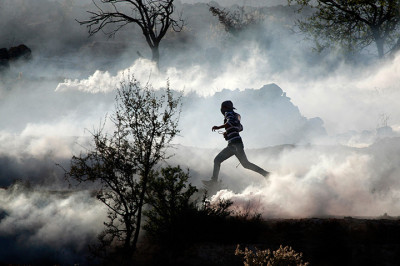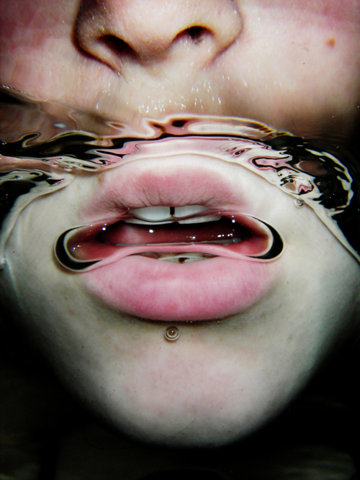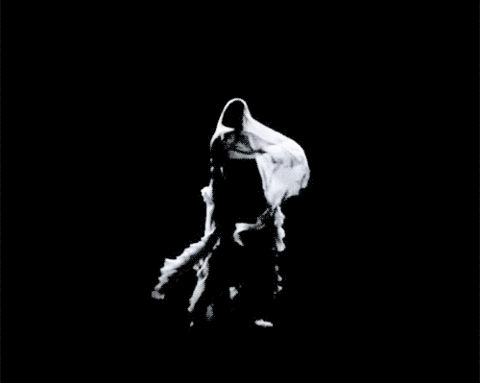So many questions. Can we undertake the psychoanalysis of a nation, searching through the miasma of images that represent a country? Can we order these images in a way that might express a history large enough to include an unconscious transmitted by cinema? Can we make people see the country that so many refuse to see? Can we recreate the territory that has been denied again and again? Can cinema offer at least one image of a land to a population that has lived too long in privation (is it possible to starve the imagination?) What mythologies might provide a foundation for the Palestinian nation struggling to be born today? These questions and so many others are set into motion in the turbulence of Lacan Palestine, the latest cinematographic essay by Toronto’s Mike Hoolboom. He digs into the work of his colleagues Velcrow Ripper, Elle Flanders, Tamira Sawatzky and Dani Leventhal. He steeps himself in newsreel images, and steals from Hollywood super productions, including multiple versions of The Ten Commandments. In this new movie, Hoolboom rethinks the genre of found footage film in the light of psychoanalytic history, flipping the question of Palestinian in all directions to offer a portrait that is complex and paradoxical.
The opening of the film shows us a child travelling. In the earliest hours of morning, in darkness, he’s alone carrying his luggage from one bus to another. We learn at the end of the movie that his name is Jihad. He’s not yet five, and he’s going to meet his father. The father that we will never meet. The adventure of Jihad sends us back to Mike Hoolboom’s quest, a quest for origins, a kind of enormous historical regression in audio-visual memory, a path where it’s easy to get lost. It is a journey with so many free associations, surprises, shocks, scary moments, dreamy reveries and introspection. This beautiful experiment is as noble as it is absurd, the intractable struggle continues, and in the midst of this fine searching a single certitude emerges. We are really in front of something that we can call cinema. Its striking intelligence and sudden illuminations confront us with a singular and authentic cinema. In the acrobatic editing, in Hoolboom’s control from the beginning of the film to the end, there is something shining, urgent, burning. There is a nearly blinding dimension to this accumulation of fragments that impels the viewer to re-see the movie as soon as it is finished. To observe again its folding parts, to find the hidden meanings, to meditate again and again on its implications.
Hoolboom based his work on the psychoanalytic reflections of Mike Cartmell, a filmmaker himself, who invokes his own trauma in his attempts to name the social behaviors that embody mythical structures. How can we get along? “How can we live in accord with one another in any way?” Cartmell offers poetic answers to this question using the quintet of John Coltrane as an example, five powerful personalities. Each musician plays a different instrument, expressing their singularity, but together they create a collective expression (Cartmell consciously refuses to use the word ‘harmony’). Here the social body does not negate the individual, individuality is not a form of sublimation. Instead, the basis of agreement, of our group work, of music even, is the necessity for solitary expression. Is this a fantasy? Regarding the couple Palestine-Israel (maybe) without doubt. But it is a fantasy that haunts Hoolboom in the endless images of couples kissing, embracing, coming apart and beating each other while conquests succeed, death stalks and walls rise.
How might one describe the undescribable? This is the unreasonable task (but can any real creation be reasonable?) that the filmmaker undertakes. Lacan Palestine appears to be the result of an obsession and logically delivers his obsessive images. I will just quote one. On a barber chair, a child is having his head shaved. A strand of hair falls on the floor in great chunks from an increasingly denuded head. Lice are running everywhere, panicking now that they’re deported. Their universe is devastated. Lice… looking at that shot we all become lice.



